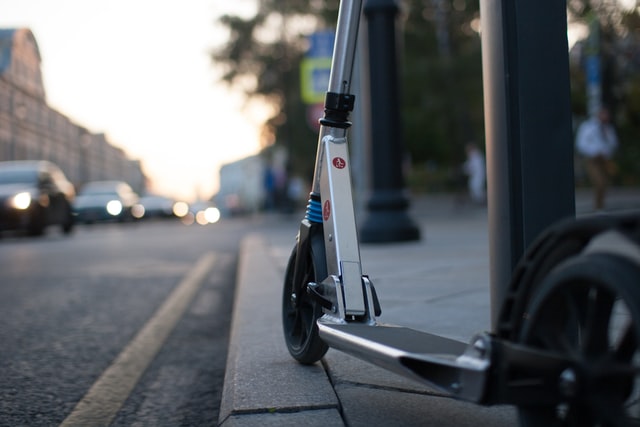Before the COVID-19 pandemic, electric scooter usage rates in the greater Atlanta, Georgia, area were reaching record highs. After a brief suspension during the early months of the pandemic, usage rates are now approaching where they were in summer 2019. In fact, they are expected to grow rapidly beyond that point to set new records and send more riders on their way than ever before. While Atlanta is just one city, most statistics indicate that cities will soon see a resurgence of electric scooter interest. Having appropriate and effective electric scooter safety tips ready to go will be of vital importance.
Key Electric Scooter Safety Factors
Between February 2019 and March 2021, Atlanta saw more than 5.4 million electric scooter trips, with four observed fatalities (three within the Atlanta city limits). While zero fatalities and minimized injury should always be the goal for any electric scooter safety program, it’s important to note that all four fatalities took place near the beginning of the recorded period in 2019. No fatalities have been recorded since January 2020, with greatly reduced injury rates also observed in that same time period.
For cities like Atlanta, the vital importance of educating riders on how to operate electric scooters in a safe and mindful manner requires cooperation from reliable operators. As seen in the case of Atlanta’s program, efforts to educate and outline clear safety tips for operating electric scooters pay off in the form of drastically improved safety outcomes.
5 Electric Scooter Safety Tips Cities Should Provide to Operators
Cities looking to set expectations with operators and establish a culture of safety as the foundation of their program can identify several evidence-based practices that improved safety for programs already on the ground, like the one in Atlanta. Here are five tips that city leaders can consider a “must do” operators can communicate to their riders to maximize electric scooter safety.
- Wear your helmet every single time.
It is vital to wear a helmet to prevent death or traumatic brain injury when operating an electric scooter. More than 80 percent of electric scooter injuries occur in the head, neck and face, making this tip a non-negotiable for cities to ask of operators. While a comprehensive safety posture is required for city officials to create true partnership with scooter operators, the helmet rule should be at the forefront of all messaging.
- Slow down for safety.
While typical electric scooters max out at a speed around 15-20 mph, it’s important to note that 37 percent of injured riders in one study reported excessive speed as a “contributing factor” to their injuries. Operators should communicate effective messaging to riders about monitoring, reducing and limiting speed regardless of where they ride. Slower speed equates to more reaction time – and less risk of serious injury.
- Park politely and responsibly.
In one audit of Atlanta area scooter parking, 24.3 percent of devices audited were violating parking regulations, and 4 percent were even blocking pedestrian and ADA-required access. Cities can ask operators to display messaging and signage outlining safe parking practices and courtesy. This practice equates to safety and improved access for all, including crucial ADA-required access for those with disabilities.
- Practice good judgment before scooting.
Various aspects of electric scooter operation can affect overall safety, and these operators should always highlight these elements. Things like avoiding nasty weather (operating electric scooters during a lightning storm is never a good idea), checking your scooter’s parts and tire pressure before riding, and using special precautions and onboard lighting when riding at night all contribute to overall safety. Cities and operators may consider creating a comprehensive pre-ride safety checklist offered to riders to help cement these practices as habits.
- Know how to ride your scooter.
Cities should always ask that operators create spaces and exercises for riders (particularly new and young riders) to get acclimated with the device to understand its functionality and get comfortable with riding at a safe speed. Exercises may include training or how-to videos, fast response to electric scooter troubleshooting requests and test-run capabilities for new riders. Easy access to answers and direction via operator resources will help cities ensure that operators are creating a safe space for all riders – and all citizens.
Electric scooter operators and cities will undoubtedly need to partner, communicate and collaborate to build growing, safe and successful micromobility programs like the one outlined above. Cities should seek to create parameters that are statistically sound and proven to create better safety and overall rider experience, and operators should be asked to sign on to these parameters, as well.
To learn more about how to operate electric scooters safely – and just as importantly, how to create data-backed guidelines for operators and riders – stop by the handy Scoot Safe Resource page.


